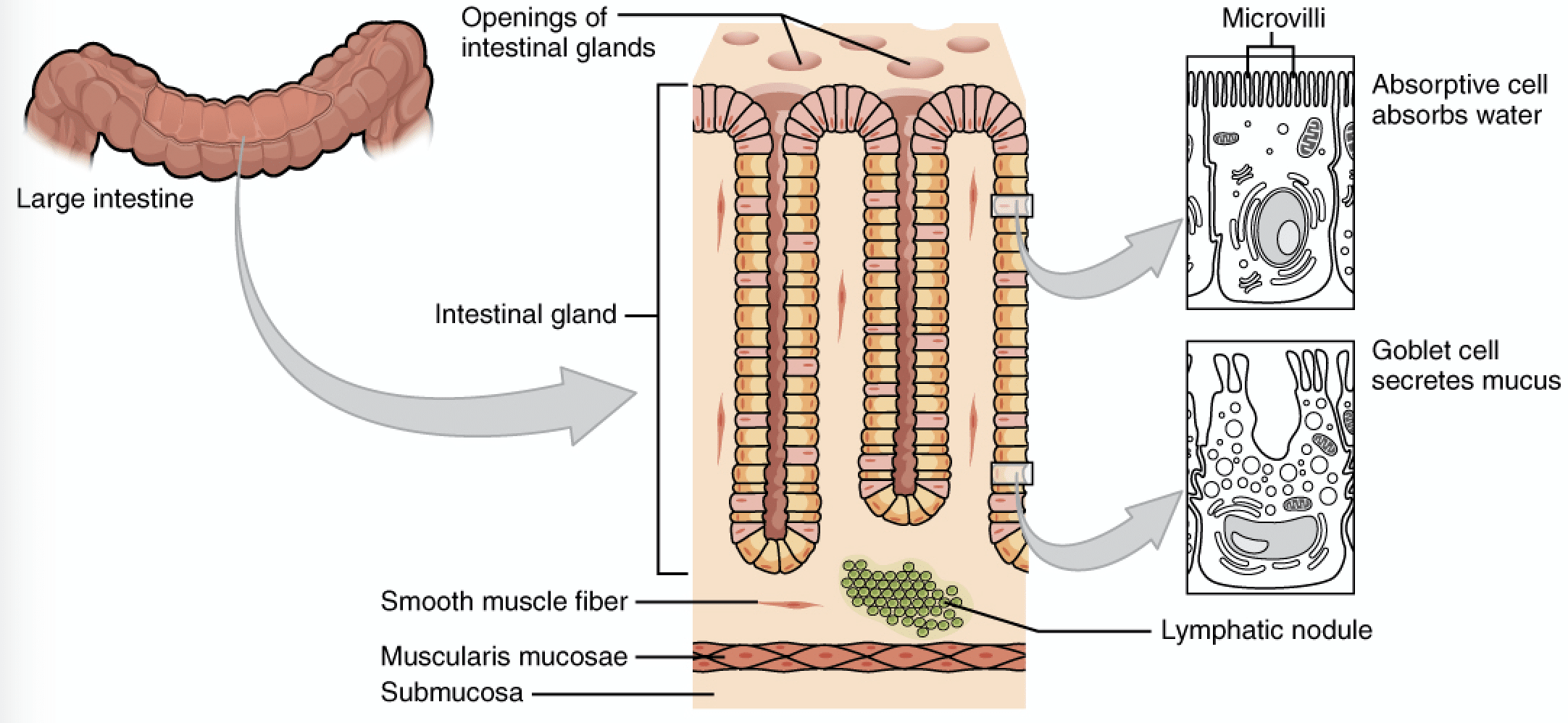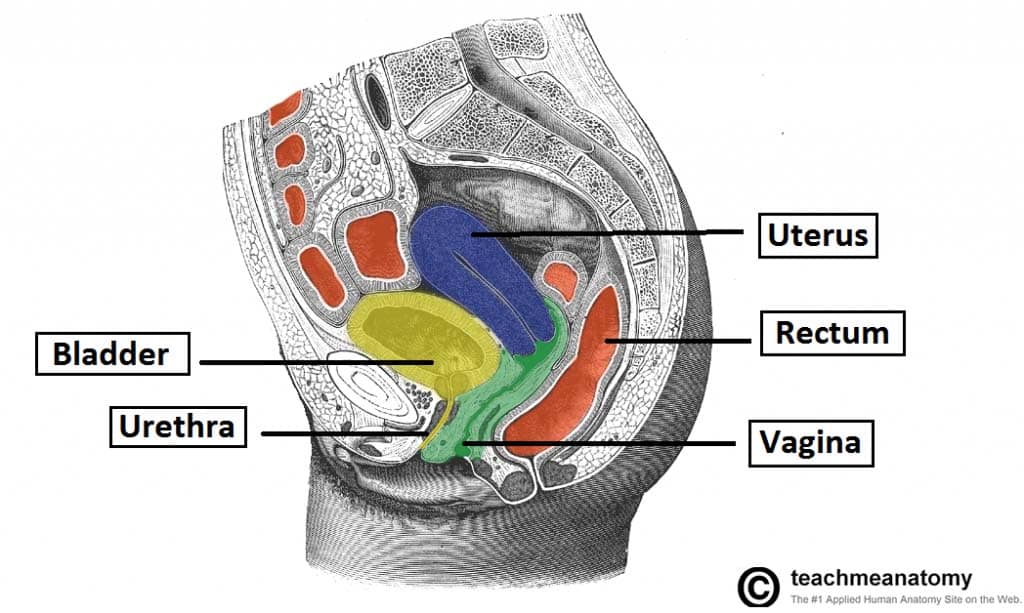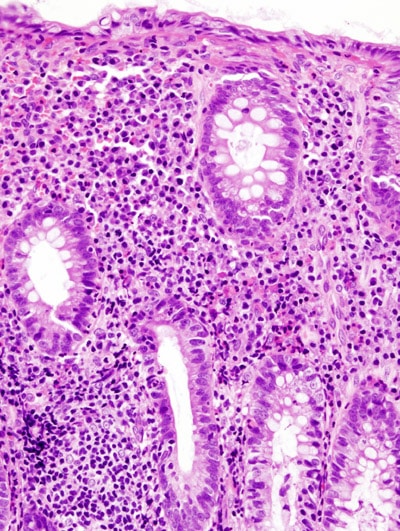- Biochemistry
- Histology
- Cardiovascular
- Respiratory
- Gastrointestinal
- Urinary
- Reproductive
- Neurology
- Endocrine
- Immunology/Haematology
The Large Intestine
The colon (large intestine) is the distal part of the gastrointestinal tract, extending from the cecum to the anal canal. It receives digested food from the small intestine from which it absorbs water and electrolytes to form faeces. Anatomically, the large intestine consists of the cecum, colon, rectum and anal canal. The colon can be divided into four parts – ascending, transverse, descending and sigmoid, and these sections encircle the small intestine.
The large intestine has several roles, including water absorption and immunity. The contents that enters the colon is already very concentrated as most of the water has already been absorbed. Thus, the large intestine is specialised to work in the environment this produces.
The large intestine is the final section of the gastrointestinal tract before the rectum. In the large intestine, after water is reabsorbed, any remaining waste material is stored as faeces to be removed, via the process of defecation. In defecation, a series of reflexes take place, that ultimately lead to peristaltic waves facilitating the movement of faeces through the anal canal.
The smooth muscle cells in the wall of the large intestine contract at regular intervals, causing the food to be churned, and therefore exposing the gut contents to a larger surface area of epithelium, helping to maximise absorption.
In this section, learn more about the physiology of the large intestine- the absorption in the large intestine, defecation, and large intestinal motility.



